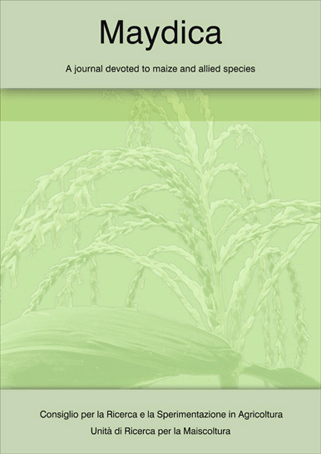Comparison among four maize varieties in conventional and low input cultivation.
AutoriLandoni M., Scapin A., Cassani E., Borlini G., Follador A., Giupponi L., Ghidoli M., Hejna M., Rossi L., Pilu R.
2020
RivistaMaydica 65(3): M27
Numero Vol 65, No 3
AbstractIn this work we compared, using a randomized block design, four early maize (Zea mays L.) varieties: three traditional varieties (Millo Corvo, Scagliolo, Agostanello) and one modern hybrid (LG 25.38) grown in conventional vs low input farming. We recorded different agronomic parameters and we performed bromatological and ICP-MS analyses, and also quantified carotenoids, anthocyanins and mycotoxins. The analysis of agronomic parameters showed a general trend of better yields from conventional farming. Bromatological analysis did not show significant differences, we found more differences among varieties than between conventional and low input farming.
Regarding minerals analysis, with the exception of the iron content, which was significantly higher from low input farming, we found high variability among the genotypes studied. The anthocyanins content, analyzed in the colored variety Millo Corvo, showed a statistically higher value in low imput farming. Finally, in both cultivation methods the level of fumonisins contamination was under the threshold limit. Taken together our data suggest that the effect of the genotypes was considerably higher than the effect of the cultivation method, hence it is the
choice of the variety that will determine the nutritional value of the product harvested.
maize, traditional variety, phytonutrients, low input farming
Link

